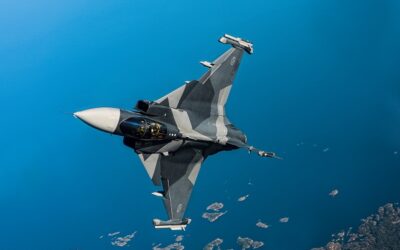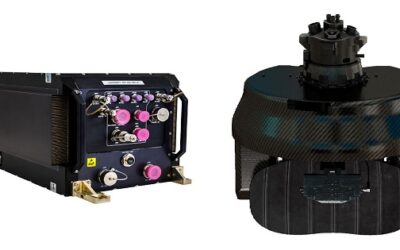Counter-narcotics or deployments or…? LCS programme in search of its mission
Recent local reports indicated that the Pentagon is debating whether the USN will put a number of its Littoral Combat Ships (LCS) to use for the US Southern Command (SOUTHCOM) counter-narcotic missions around South and Central America.
This echoed concerns voiced by Captain Grant Jackson, US Navy (USN), Director of Operations and Intelligence/J3 Joint Interagency Task Forces West when he spoke at Sea Air Space in Washington DC earlier this month. As one of the speakers at the Global Pacific Panel, he reminded the audience of the increase the US has been witnessing in the number of drug related deaths and highlighted the key counter-narcotics role the USN is playing in the Pacific to help curb drug smuggling into the country (https://monch.com/mpg/news/maritime/3122-globaloa.html).
To be sure, the use of the LCS for counter-narcotic missions has been under consideration for some time now. A memo from Secretary Richard Spencer to Chief of Naval Operations Adm. John Richardson last December, presents SOUTHCOM’s joint task force as a “very important element in the control of illegal drug transportation,” and indicates that four ships (LCS and ‘Spearhead’ class expeditionary fast transport vessels) will be provided by the USN to support these efforts.
The probability that a number of LCS be used by SOUTHCOM for these operations, however, remains fairly low due to a range of different factors.
Firstly, the LCS programme is currently undergoing a reorganisation that departs from the original multi-purpose functions these ships were originally envisaged for when they were designed. Indeed, initially the emphasis was for the LCS to all have modular systems that meant any given ship could set sail for an anti-submarine (ASW), anti-surface (ASuW) or mine countermeasure (MCM) mission. It included a complicated crewing arrangement that would have three crews rotate between two hulls, and having the two different types of hulls mixed in the East and West coast homeports. The new arrangement, on the other hand, will see hulls 1 to 4 serve in San Diego as a test division for mission module components, while the remaining ships (currently 11) will be divided into divisions of four ships each assigned to a specific mission (ASW, ASuW or MCM) and separated between East/West, ‘Freedom’/’Independence’.
The reorganisation of the LCS programme has meant that, as stated in an article from the USN Institute (USNI) News site, in addition to having three of the four original LCS in maintenance, four of the eight block-buy ships that have already been commissioned are currently undergoing their initial Post Shake-down Availabilities (PSA). This means that seven out of eleven commissioned ships are currently unavailable to the USN.
Secondly, bearing in mind that only a limited number of LCS is currently available to the USN, it is also important to note that, as stated in the Director, Operational Test and Evaluation (DOT&E) FY 2017 Annual Report: “With the Maritime Security Module, installed as part of the ASuW MP [mission package], the ship can conduct Maritime Security Operations including Visit, Board, Search and Seizure of ships suspected of transporting contraband.” This means the MP that would suit counter-narcotic mission support is available now only on the ships that will be fitted for ASuW.
However, in his latest Congressional Research Service report, published on 5 April, on “Navy Littoral Combat Ship (LCS) Programme: Background and Issues for Congress”, Specialist in Naval Affairs Ronald O’Rourke noted that at the end of FY2017 the Navy’s force of Small Surface Combatants (SSC) totalled 22 battle force ships including 11 LCS and no frigates. The absence of frigates, and the fact that the future frigates programme (FFG(X)) is not due to see a commissioned frigate before FY2020, indicates that it likely that any LCS with ASuW capabilities will be kept for USN missions.
Finally, in addition to these technical hurdles to the decision, remains the fact that, as mentioned in another local report, legally the USN’s missions do not include fighting crime directly; rather it is meant to play a supporting role to the US Coast Guards.
With eleven LCS ships currently commissioned into the USN (soon 12 with the commissioning of ‘Independence’ class USS Manchester planned in May in Portsmouth, New Hampshire), it seems that the programme is still undergoing some soul searching.
Indeed, the DOT&E report indicates that the Navy has not fully tested the ships’ anti-ship missile defence capabilities and does not plan to conduct further air warfare operational testing of ‘Freedom’ class seaframes 1 though 15 in their current combat system configuration. As such, “the Navy has accepted the risk of continued operation with a combat system that is not operationally tested.” Moreover, the survivability testing and preliminary analyses on both LCS variants continue to demonstrate that neither class of ship is survivable in high intensity combat. Finally, a number of the MPs are still not fully tested, whether ASW, ASuW or MCM.
What is left at the moment for the LCS programme is a reorganisation that will take them away from the Navy for the best part of 2018, and the likelihood that they will only be affected to areas with low-tensions. Counter-narcotic missions would have been perfect in this case, but since it is looking unlikely as well… where will the LCS eventually be deployed to?
AV
























